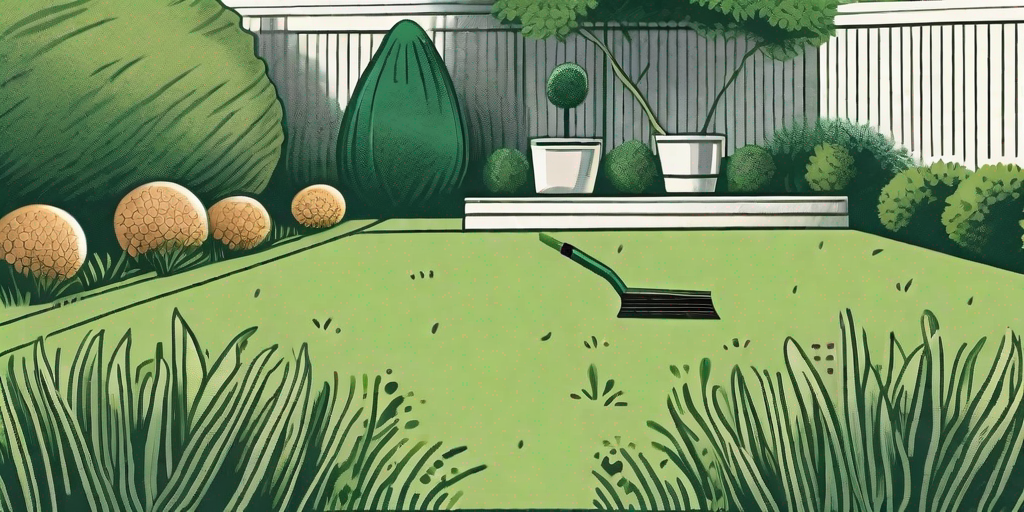
If you've ever looked at your neighbor's lush, green lawn with envy, wondering how they manage to keep it looking so perfect, we have a secret for you. It's not about having a green thumb or spending hours each day on lawn maintenance. It's about choosing the right type of grass. And in this case, the grass is always greener on the side with peanut grass.
What is Peanut Grass?
Before we dive into the nitty-gritty of how to cultivate and maintain a peanut grass lawn, let's first understand what peanut grass is. Peanut grass, also known as Arachis pintoi, is a type of perennial legume that is native to Brazil. Despite its name, it's not the kind of peanut you'd snack on during a baseball game. Rather, it's a ground cover plant that is often used as a low-maintenance alternative to traditional lawn grasses.
Peanut grass is known for its bright green leaves and yellow flowers, which can add a pop of color to your lawn. It's a hardy plant that can withstand a variety of conditions, making it an excellent choice for those who want a beautiful lawn without the hassle of constant upkeep.
Why Choose Peanut Grass?
Now that we know what peanut grass is, let's delve into why it's a great choice for your lawn.
Low Maintenance
One of the main reasons people choose peanut grass is because it's low maintenance. Unlike other types of grass that require regular mowing, watering, and fertilizing, peanut grass can thrive with minimal care. This makes it an excellent choice for those who want a beautiful lawn but don't have the time or energy to devote to regular lawn care.
Additionally, peanut grass is resistant to many common lawn pests and diseases, which means you won't have to spend time and money on pest control or disease prevention.
Drought Tolerant
Another advantage of peanut grass is its drought tolerance. It can survive in dry conditions, making it an ideal choice for areas with low rainfall or water restrictions. This not only saves you the hassle of regular watering, but also helps conserve water.
Despite its drought tolerance, peanut grass still thrives in wet conditions, making it a versatile choice for a variety of climates and weather conditions.
How to Grow Peanut Grass
Now that we've convinced you of the benefits of peanut grass, let's get into the how-to of growing it.
Prepare the Soil
Like any plant, peanut grass needs a good foundation to grow. Start by preparing the soil. Remove any existing grass or weeds and loosen the soil with a garden fork or tiller. This will help the peanut grass roots establish themselves in the soil.
Next, add compost or organic matter to the soil. This will improve the soil structure and provide nutrients for the peanut grass.
Plant the Peanut Grass
Once the soil is prepared, it's time to plant the peanut grass. You can do this by spreading peanut grass seeds or plugs evenly across the soil. Make sure to water the area thoroughly after planting to help the seeds or plugs establish themselves.
It's important to keep the soil moist (but not waterlogged) for the first few weeks after planting. This will help the peanut grass establish itself and start to spread.
FAQs about Peanut Grass
Still have questions about peanut grass? We've got you covered. Here are some common FAQs about peanut grass.
Is peanut grass safe for pets?
Yes, peanut grass is safe for pets. However, like any plant, it can cause digestive upset if your pet eats a large amount of it. It's always a good idea to supervise your pets when they're outside to prevent them from eating anything they shouldn't.
Can peanut grass grow in shade?
While peanut grass prefers full sun, it can tolerate partial shade. However, it may not grow as thickly or spread as quickly in shady areas.
Does peanut grass attract pests?
While no plant is completely immune to pests, peanut grass is resistant to many common lawn pests. However, it's always a good idea to keep an eye on your lawn and address any pest problems as soon as they arise.
Conclusion
So there you have it, folks. The secret to a lush, low-maintenance lawn is not a magical green thumb or endless hours of labor. It's peanut grass. With its bright green leaves, yellow flowers, and easy-care nature, it's no wonder more and more homeowners are choosing peanut grass for their lawns.
So why not give peanut grass a try? Your lawn (and your free time) will thank you.











